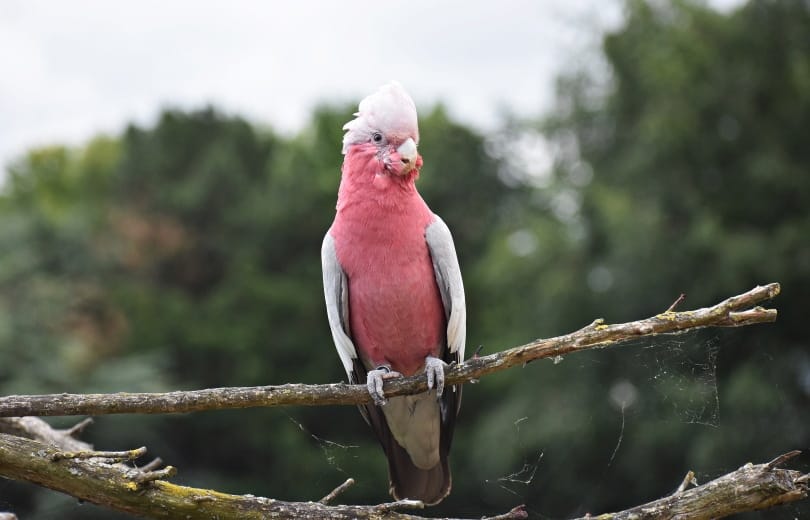
The Rose-breasted Cockatoos are not always easy to get but are well worth the effort to obtain. Like most Cockatoos this one is a real friendly bird that needs a lot of love and attention. The feathers are very soft like down which makes them fun to pet. Unlike other Cockatoos these should not be fed a diet of oily seeds, like sunflower seeds.
To learn more about Cockatoos and their needs visit:
Guide to a Happy, Healthy Cockatoo
- Kingdom: Animalia
- Phylum: Chordata
- Class: Aves
- Order: Psittaciformes
- Family: Cacatuidae
- Genus: Cacatua
- Species: roseicapilla
Scientific name:
Distribution:
The Rose-breasted Cockatoo is found in most parts of Australia and is considered a major pest species in many areas of that country.
Description:
Rose-breasted Cockatoos are a smaller cockatoo with rose colored feathers on the breast and the underside of the wings. They can learn to talk, as can most cockatoos and are easy to teach all kinds of tricks. Cockatoos in general are a very loving type of bird that needs a lot of attention from their owners. Buy a cockatoo only if you can spend a lot of time with it.
Care and feeding:
A roomy cage is required unless the bird is to be let out for extended periods. Many birds can spend most of their time on a play pen or parrot perch. They eat a variety of seeds, nuts, fruits, and commercial pellets, as well as the same nutritional foods humans eat. The Rose-breasted Cockatoo should be fed a less oil in their diet (which comes from sunflower seeds and other oily seeds) than other cockatoos since they can develop fatty tumors known as lipomas.
See About Cockatoos: Housing and About Cockatoos: Care and Feeding for more information.
Size – Weight:
Galahs are one of the more petite Cockatoos being about 25-30 cm (10-12 inches) in length.
Social Behaviors:
In the wild Cockatoos, are friendly and peaceful. They live together in flocks of 20 or more birds.
Breeding/Reproduction:
See About Cockatoos: Breeding for Cockatoo breeding information.
Sexual differences:
Hard to tell with young birds. As they get older the iris of the females’ eyes will develop a lighter color while the males’ eyes will remain black.
Potential Problems:
Cockatoos can be quite loud screechers. The behaviour can be reduced by giving attention and proper surroundings. Also, since they are prone to chewing, if they are not given enough attention they will chew their own feathers.
Availability:
These birds are rarely available and are expensive.
Activities:
Loves to climb and play. Provide lots of toys.
Featured Image Credit: Gabriela Beres, Shutterstock
